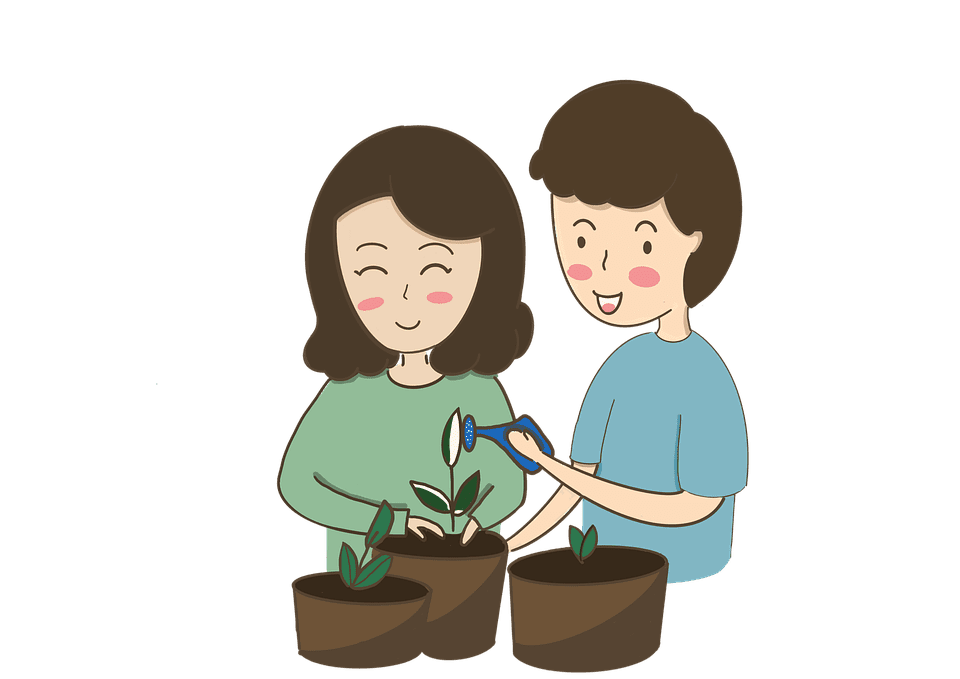
In today’s high-paced, high-stress environment, it would serve you well to cultivate better mental health. If fact, why not do it literally? According to researchers at the University of Florida, just a couple of gardening sessions over four weeks significantly improved mood and reduced depressive symptoms in healthy women who participated in the new study.
The mental health benefits of gardening
From indigenous teenagers embarking on rites of passage in the world to modern East Asian communities taking ‘forest baths’, people have always looked to nature for food, comfort, and even personal growth and healing. According to evolutionary biologist E.O. Wilson, humans have ‘biophilia‘, which entices them to seek out nature experiences. He argues that we are evolutionarily hardwired to seek lush natural spaces because they are resource-rich, where one can find plenty of food, shelter, and building materials. In other words, we’re attracted to plants, animals, and nature at large because we’ve always depended on them for our survival.
It’s no wonder that the scientific literature abounds in hundreds of studies documenting the positive impacts of nature on our social, psychological, and emotional lives. Even simply viewing nature imagery in photos and videos can make us feel awe, wonder, gratitude, and reverence, one study found — all of which are positive emotions known to contribute to well-being and mental health. Another study from the University of Edinburgh found that people who lived near larger areas of green space reported less stress and showed greater declines in cortisol levels (the stress hormone) over the course of the day.
These are just a couple of examples of how nature can greatly improve our mental health, but what if there are little nature areas close to your urban home? If you’re lucky enough to have a backyard, then you could try fostering your own little corner of nature.
Researchers at the University of Florida led by Charles Guy wanted to investigate the psychological benefits of gardening in a controlled experiment and compare the effects to another therapeutic activity, namely art-making. And while past studies have shown that gardening can help improve the mental health of patients with preexisting medical conditions, the researchers wanted to see if this practice can boost mental health in healthy people.
“There is an extensive history and literature of anecdotal endorsements that engaging in gardening activities and horticultural therapy or people-plant interactions such as visiting gardens has therapeutic benefits, particularly with respect to stress, emotions, anxiety, and overall mental well-being,” Guy, an emeritus and courtesy professor of plant physiology and biochemistry at the University of Florida, told PsyPost.
“What is fundamentally different than most other anecdotal accounts of something having therapeutic properties is the fact that perhaps millions of gardeners have expressed such sentiments for long periods of time. What seems to be presently missing is evidence from properly designed and properly controlled large-scale clinical trials that quantitatively measure treatment effects and outcomes and dosage levels of well-defined and standardized treatment regimen(s). To begin moving in the direction to justify large-scale clinical trials, we required preliminary evidence of treatment effects and outcomes with a well-defined participant population in a small-scale study.”
Both gardening and art-making are great ways to improve mood and keep depression at bay

The researchers recruited 32 healthy women aged 26 to 49 years old with no prior history of chronic disease, tobacco and drug abuse, and prescribed medication for anxiety or depression. Half the participants were assigned to gardening sessions, while the other half did art. Both groups met twice a week for a total of eight sessions over the span of a month.
“Both gardening and art activities involve learning, planning, creativity and physical movement, and they are both used therapeutically in medical settings. This makes them more comparable, scientifically speaking, than, for example, gardening and bowling or gardening and reading,” Guy explained in a statement.
During their gardening sessions, the participants learned how to compare the quality of seeds and sow them, transplant different kinds of plants, and how often to water seedlings, as well as harvest and taste various edible plants. Meanwhile, those in the art-making group learned about various techniques, such as papermaking, printmaking, drawing, and collage.
Before and after their interventions, the participants had to complete a series of assessments measuring anxiety, depression, stress, and mood. Measurements of heart rate and blood pressure were also routinely collected at the beginning and end of each gardening or art-making session.
The researchers found that both interventions offered similar mental health benefits, with participants in both gardening and art-making classes showing significant reductions in mood disturbances, stress, and depression symptoms. The gardening group reported slightly less anxiety than art makers. This is good news as neither gardening nor art-making may be ideal choices for everyone, but at least you have the option to pick one.
Although the study’s sample size was small, the researchers were also able to assess dosage effects for both interventions, meaning the mental health scores tended to improve with each additional session. Now, they would like to perform follow-up large-scale studies that involve the general population to see which might benefit and by how much.
“Larger-scale studies may reveal more about how gardening is correlated with changes in mental health,” Guy explained. “We believe this research shows promise for mental well-being, plants in healthcare and in public health. It would be great to see other researchers use our work as a basis for those kinds of studies.”
The findings appeared in the journal PLoS ONE.






